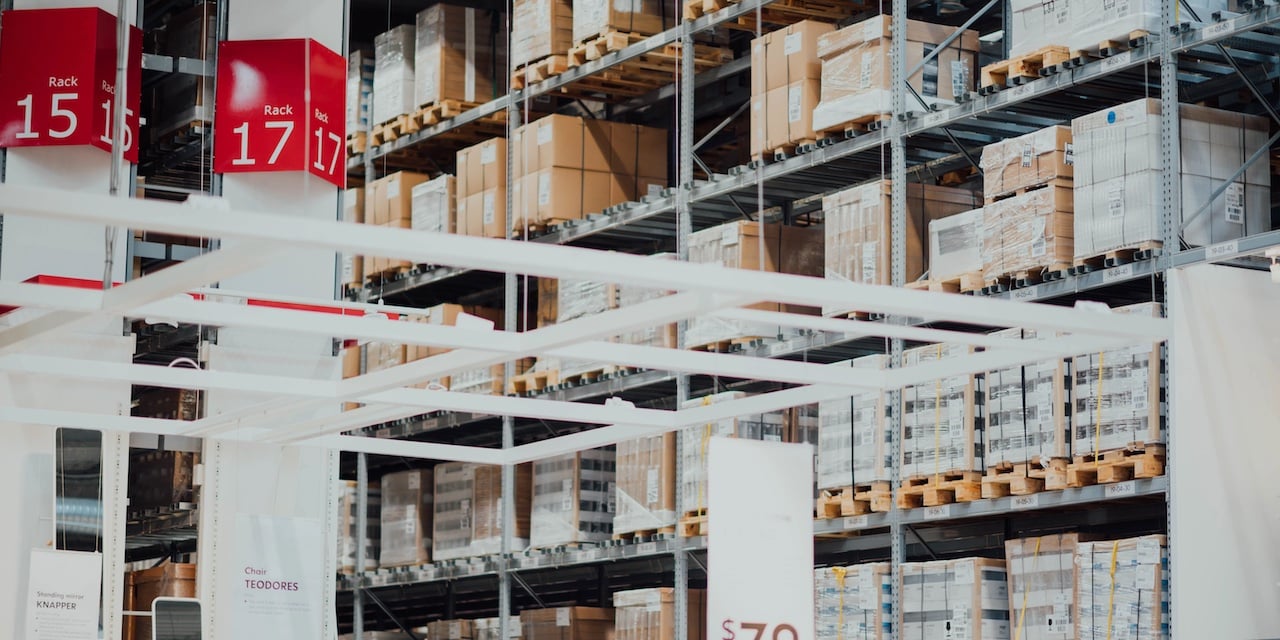In order to answer your request, we are obligated to process the data given above. Sometimes, however, we would like to use them for slightly different purposes, such as statistical data or informing you about our new products and services.We promise that we will use the given information for communication purposes only. We also remind you that you can unsubscribe from our mailing at any time (see Privacy Policy).
Order fulfillment - it’s almost the synonym, the name-of-the-game of ecommerce and online shopping. Isn't it all about the smooth running of the entire process, from the moment of purchase to delivery of the product to the consumer? It sounds simple and uncomplicated, but in fact, order management and order fulfillment are a lot of interconnected processes, operations, steps to go through to achieve the final result flawlessly and as quickly as possible. In this article, we would like to introduce you to the idea of OMS (Order Management System) and analyze how to choose the best solution for your business.

What is an order management system?
An order management system (OMS) is a platform that allows tracking of sales, orders, inventory, and fulfillment from various channels. The order goes through the appropriate flow, changing its status, till it arrives at the final destination. The system is also a common board for all the information related to the orders, such as:
- Customers
- Sale channels
- Product information
- Inventory levels and location
- Suppliers for purchasing and receiving
- Customer service
- Order printing, picking, packing, processing, and shipping
Let's talk for a moment about what the typical use and order management of OMS (Order Management System) looks like. The platform or the tool is loaded with information about the seller's stock: you can see exactly what products are available in what quantity and in which warehouse. Any order placed through any sales channel flows into the system (you can read more about multi- and omnichannel in this article). After the order is registered, it is sent to the warehouse along with all the necessary data.
The order management system software issues a request for picking and packing the order and begins the process of completing all formalities related to the purchase documents. Invoices and other necessary documents are printed and sent. Appropriate labels are also prepared so that the order can be shipped via a courier company.
When the order leaves the warehouse, the system updates such data as inventory and shipment status. The process does not end when the parcel is in the hands of the recipient and the status changes to "delivered". The OMS system also offers post-sales monitoring, registration, and updating of other systems in the event of a return or complaint.
Order management process challenges
As you can imagine, it can be confusing for the whole operation, which involves many systems, to be mixed up together. What should you pay special attention to when analyzing the order management in your company? What are the biggest challenges?
- the multitude of departments and the need for transparency for each of them,
- the presence of other systems - ideally if you can replace a large part with one platform,
- various sales channels and their integration,
- managing stock levels and warehouses, to ensure that a given order reaches the customer as quickly as possible, regardless of the place of delivery,
- exceptions and emergencies - not always everything goes smoothly and according to plan, but the key is to provide the involved entities with full information and the status of the operation,
- logistics and order delivery.
These and other challenges can cause a significant increase in the costs of business activity, which is why it is so important to properly manage them and implement a tool that will automate, optimize, and reduce the number of errors in the process.
Pssst...
(If you're curious about how Linker Cloud manages stock, be sure to read our Tech Overview series).
.png?width=1170&name=MicrosoftTeams-image%20(7).png)
Types of order management systems for ecommerce
Depending on the scale of the business, type of operation, development plans, the company may manage its orders in various ways. Let's look at some of them and check their advantages and disadvantages.
Manual order processing
Many entrepreneurs still process their orders using manual processes, keeping lists in excel, providing information by e-mail, and manually packing items for shipping. If someone is at the beginning of their business journey, it is understandable that initially, he will not be able to afford a large expense related to the implementation of the system.
Nevertheless, such a decision is inevitable if the business stabilizes and begins to grow. Fortunately, many platforms offer integrated solutions for small and medium-sized enterprises.
Ecommerce platform
When there are more orders and the store is operated by one of the ecommerce platforms, it is possible to partially automate the processes using the tools provided. This solution still has many disadvantages, because it only supports a given sales channel, it does not provide full transparency and functionality.
Standalone solution
The need to connect multiple sales channels, 3PLs, and managing more complex processes will require a more advanced tool. This is where special, dedicated software comes in handy - we can buy a license or choose a program designed specifically for the needs of the enterprise, which is often a source of additional problems with further integration, future scaling, and error handling.
ERP
Enterprise-class systems offer comprehensive business services, including order management. This advanced software gives great opportunities when it comes to efficient and transparent management, while its cost is a big disadvantage.
Advanced digital platforms, cloud solutions
The most technologically advanced order management software that integrates in the best possible way all systems involved in order processing, ensuring full transparency in real-time.
It is worth mentioning the solutions for fulfillment, where, in addition to advanced software, we have access to a physical network of logistics entities, thanks to which the management of our order on a global scale is fully automated and optimized.

How to choose the best order management system (OMS)?
Then: how to choose the right system? What to look for? Each of the solutions will have a few available functions, which, depending on your business, will be more or less important. What is the most crucial in all of this?
1. Functionality. What functions will the system be able to handle?
How does the system itself work? What can you see in it, how? At the very beginning, it’s good to make a list of the necessary features for the business today and in the perspective of at least the next 12 months and compare them with the solutions proposed by suppliers. Your sales channels will determine your basic choices: multiple channels, if you offer drop shipping, or BOPIS (Buy Online, Pickup in Store) you will have an additional challenge to ensure a seamless customer experience. Another thing to pick the right order management system is a feature that allows you to process reverse logistics.
2. Integrations. What integrations does the OMS system offer?
This point is related to the above, but it is worth paying attention to the system: it must be able to retrieve data from all sources, otherwise, we will not fully use the potential of automation.
3. Price. What is the price of an Order Management System Software?
The OMS system is a considerable investment, so without specifying the budget, in the context of potential savings, development opportunities, etc. It’s not easy, but it is worth looking at them because perhaps a slightly larger investment will result in a good rate of return in a short time and will allow us to effectively increase our sales.
4. Scalability. Can Order Management Systems Software be scaled?
Once we incur a considerable expense on the system, we are unlikely to be satisfied if it turns out that we must spend more money, because the system is already ineffective for our growing ecommerce businesses.
5. IT support and facilities. Does the service provider provide comprehensive implementation support and a customer service team?
...or maybe it will be necessary to have your own IT department that will prepare the system for operation? Does the company offer post-sales support and what are the conditions for this kind of service?
This can be critical to our business - if the system crashes and we are unable to process orders for a long time, in addition to money, we will also lose customer trust. This will hurt, as customer satisfaction and meeting customer expectations are some of the key drivers of business success.
Benefits of an effective OMS system
Once the OMS system is fully implemented, you will soon see the benefits it gives you in your daily work. Which areas will benefit from the introduction of a professional order processing system?
- Better control and transparency
Now you have everything in one place, with quick access to any information: stock level, order status, invoices. The comfort of business management increases.
- Easy inventory management
This is one of the most challenging areas for one, who drives an ecommerce business. With OMS system inventory management is easy and supports your daily business.
- Automation and error reduction
Once your transfer many processes and operations to the system, you will avoid manual processing, manual tasks, and errors that can occur. Systems are also equipped with the right alert functionality, that will help you manage all critical moments.
- Readiness for every order
It doesn’t matter if the order is placed during the night, or high-season came: in OMS system everything happens automatically 365/24/7.
- Cost reduction
OMS system gives an opportunity to better use your resources, which is strictly connected to significant cost reduction.
- Sales increase
With all the benefits above, your software system is ready to receive and fulfill customer orders, which means higher sales and revenue increases.
PS: A modern OMS system will come in handy for you, especially during the so-called industry High Season (Black Friday, Cyber Monday, and Christmas) - download our "How to prepare your e-commerce logistics for high season" ebook and check out what logistical issues of order management are worth paying attention to during this challenging sales period!
We keep our fingers crossed for your sales success. If you haven’t found the answer to a question-related OMS system above, do not hesitate to contact us. Our experts are here to give any advice.






